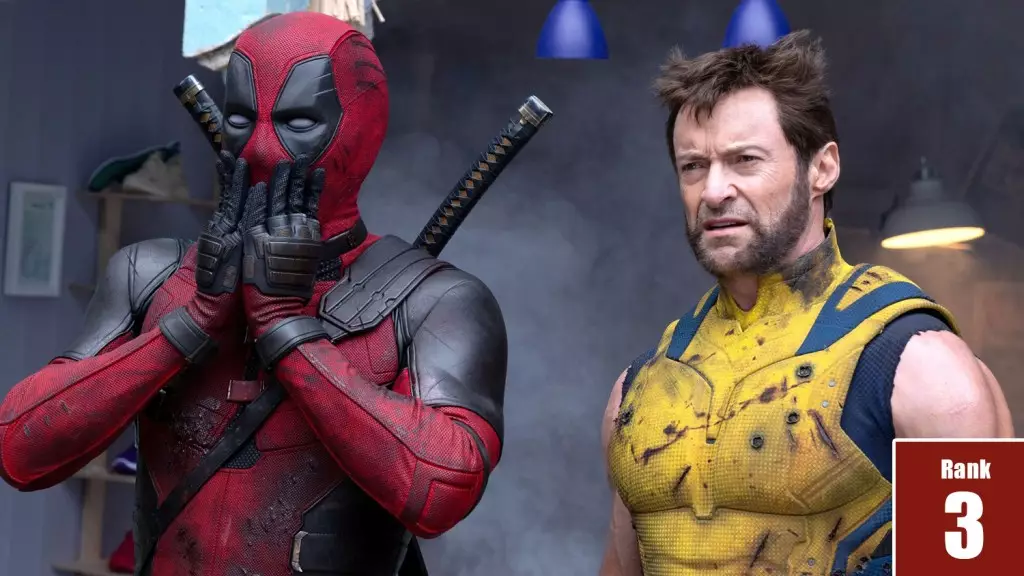In a cinematic landscape frequently dominated by sequels, reboots, and franchises, *Deadpool & Wolverine* represents a masterclass in timing. The film’s substantial box office success—tallying over $1.3 billion worldwide—underscores an intriguing phenomenon in Hollywood: absence makes the heart grow fonder. With the superhero genre experiencing fatigue, a careful strategic delay in its release became a double-edged sword for Disney and Marvel Studios. The prolonged break allowed audiences to rekindle their excitement for the characters, a gamble that ultimately paid off in spades.
By positioning the film to launch after the writers’ and actors’ strikes, Disney leveraged not just the pent-up demand but also the zeitgeist of returning cinema and live entertainment. The decision to postpone the release until late July, rather than rushing it into theaters amid production turmoil, emphasized a counterintuitive but true maxim of film: sometimes, it’s better to wait for the rapture rather than forcing the narrative. It illustrated the importance of understanding the audience’s emotional landscape and capitalizing on it—something that lesser studios overlook.
Character Cameos and Nostalgic Pull
Acase in point that adds deep layers to the film’s success is the strategic use of beloved legacy characters. The reunion of fan-favorite actors from Fox’s original *X-Men* series isn’t merely a nostalgic ploy but a calculated storytelling device—daring the audience to smile while reminiscing about a cultural phenomenon that initially swept them away. Hugh Jackman’s return as Wolverine, despite his character meeting an end in *Logan*, illustrates a clever subversion of expectation that reinvigorated a franchise teetering on the brink.
The presence of additional cameo appearances—especially moments such as Blake Lively donning the persona of Lady Deadpool—adds layers of humor and complexity, not just for die-hard fans but also for a general audience casually acquainted with the lore. These carefully-crafted comedic connections not only provide stepping stones for emotional engagement but also feed into the larger tapestry of the Marvel multiverse, enticing viewers who might otherwise dismiss a superhero film.
Pioneering Marketing Strategies and Pre-Release Buzz
The marketing strategy for *Deadpool & Wolverine* was nothing short of revolutionary. Disney achieved a remarkable feat by creating a perfect storm of anticipation through robust engagement across various media platforms. The groundbreaking Super Bowl trailer shattering viewership records by hitting 365 million views becomes an integral part of the narrative of the film’s success. In an age where traditional advertisement can often feel bloated and uninspiring, this campaign utilized cultural events to create relatable content that resonated deeply with audiences.
The buzz peaked as Disney thoughtfully orchestrated various promotional beats, including a trail of blockbuster announcements and collectibles that kept fans on the edge of their seats. This unparalleled synergy between social media engagement, live events, and blockbuster partnerships led to pre-sales that set new industry standards. With $8 million fetched on its first day of ticket sales alone, the broader reflection is on how precisely timed and culturally relevant marketing can lead not just to higher revenues but also to a deeper connection between content and consumer.
The Evolution of the R-Rating and Disney’s Bold Move
Perhaps one of the boldest decisions was Disney’s willingness to embrace the R-rating after years of family-friendly content. The transition from primarily G and PG-rated films to a raunchy, mature comedy underscores a broader industry shift where audience preferences dictate creative freedom. In the past, a Disney release with an R rating would have been unthinkable; now, it’s become a pathway for artistic expression. This illustrates a productive rebellion against traditional norms, showcasing that risks can yield remarkable rewards.
While financial analysts initially expressed skepticism regarding the viability of an R-rated movie from Disney, *Deadpool & Wolverine* implored them to reconsider their established parameters for success and profitability. The film’s profit margins, exceeding $400 million after production costs, validate Disney’s break-free stance and add a strong argument to the ongoing discourse on creative liberation within family-oriented studios.
A Bright Future for Deadpool and the Cinematic Universe
Overall, the triumphant journey of *Deadpool & Wolverine* serves as an essential case study for aspiring filmmakers and established studios alike. Its layered marketing, strategic character usage, and defiance of industry norms combine to illustrate a new paradigm in blockbuster filmmaking, where storytelling is king, but the method of delivery is kingmaker. In a time when franchises cling to formula and familiarity, this film embraces innovation and bold narratives, offering a refreshing reminder of the possibility buried in risk, timing, and cultural sensitivity. While the superhero genre may appear washed-up to some, films like *Deadpool & Wolverine* prove that with the right approach, there’s always room for reinvention in Hollywood’s hallowed halls.

